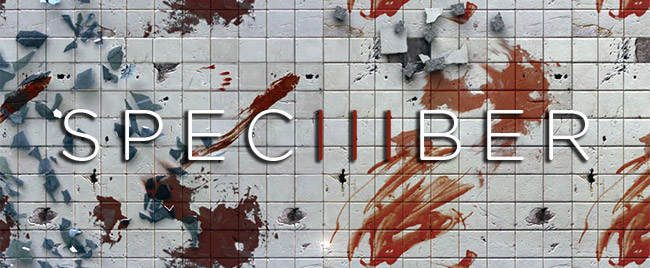
For the third year, Spectacle is proud to present a month-long lovingly-selected series of unknown, mysterious, and shocking films from around the world: SPECTOB3R.
This we’ve cranked out out our leanest, meanest monster yet.
SPECTOB3R is all chiller, ALL CHILLER: Gothic mindbenders? Czech! Freaky Norwegian water spirits? <Exhales bubbles and gives underwater thumbs up>. Spanish horror-rotica? Mmmmm. Satan? Hail yes! Brooke Shields? Duh! Sex Olympics? Go for the gold!

ALICE SWEET ALICE
(aka COMMUNION)
(aka HOLY TERROR)
Dir. Alfred Sole, 1976.
107 mins. USA.
FRIDAY, OCTOBER 25 – 7:30 PM
SUNDAY, OCTOBER 27 – 10:00 PM
“God always takes the pretty ones.”
Typifying a crucial point in the lineage of international horror is ALICE SWEET ALICE, a stylish and deeply unnerving American giallo that features a mask-wearing, knife-wielding killer, yet predates the slasher craze by a number of years.
Alice is a peculiar, angry 12-year-old in a devout Catholic household with a far-too-perfect sister, absent father, impatient mother, overbearing aunt and licentious, obese landlord. After her sister is burned to death in a pew at her first communion, Alice understandably becomes the prime suspect. Gradually, her strange, volatile behavior escalates, continuing to alarm her family as the unspeakable violence against those around her persists. Is Alice’s deformed, two-faced doll just a toy… or is it also a metaphor?
Perhaps most notable for being the first screen appearance of budding-sexpot Brooke Shields –who plays Alice’s angelic sister Karen– the real star of ALICE SWEET ALICE is the deranged titular character herself, played with disturbing efficacy by a 19-year-old(!) Paula Sheppard (who would later go on to star in 1982’s sci-fi synth-punk opus LIQUID SKY, her only other screen credit). Originally premiering as COMMUNION in 1976, the film was re-titled by skittish censors as ALICE SWEET ALICE upon distribution in 1978, then again as HOLY TERROR in 1981, when it was re-released (after the successes of PRETTY BABY, THE BLUE LAGOON and ENDLESS LOVE) with promotional materials foolhardily inflating Shields’ role.
Literally rounding out the cast is astoundingly weird horror foot-note Alphonso de Noble, the immense, cat-crazy landlord whose revolting on-screen persona was scarcely an act. Also appearing in a couple of Joel M. Reed movies before dying at the age of 31, de Noble was discovered while working as a bouncer at a gay nightclub in New Jersey, where he was alleged to regularly drum up passive income by dressing as a priest and hanging out in cemeteries, soliciting money from grieving family members under the guise of donations to the church.
Alfred Sole’s sole triumph as a writer/director –neither 1972’s porn drama DEEP SLEEP nor 1982’s horror comedy PANDEMONIUM were able to save him from a subsequent career as Production Designer on VERONICA MARS– ALICE SWEET ALICE is an undisputed 1970s horror classic: a film that sustains a disquieting, sinister vibe arguably better than many of its better-known Euro predecessors or subsequent American offspring.
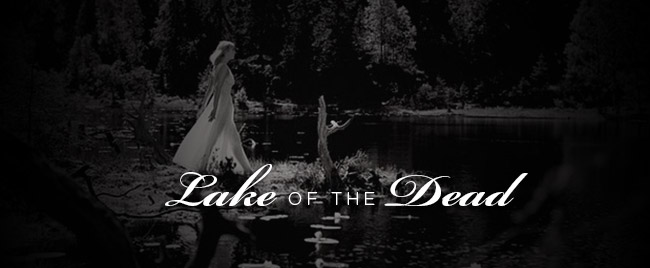
LAKE OF THE DEAD
Kåre Bergstrøm, 1958.
Norway. 76 min.
In Norwegian with English subtitles.
THURSDAY, OCTOBER 3 – 7:30 PM
TUESDAY, OCTOBER 22 – 10:00 PM
In this Norwegian cinema classic, a group of old friends sets out to visit one’s brother at his cabin in the woods only to find the man missing and his dog apparently killed. As the strangeness of the circumstances settles in, one recalls the legend of a previous inhabitant who killed his sister and her lover before drowning himself in the lake. Now, occupants are said to hear phantasmic cries in the night and feel compelled if by siren song to the lake — and perhaps drawn to repeat the earlier tenant’s crimes. As the characters represent a cross-section of arts, sciences, and humanities, they engage in spirited debate about faith, superstition, and reason; yet it’s not long before pontification gives way to some truly creepy happenings. Smart, atmospheric, and unnerving, LAKE OF THE DEAD is a classy chiller that stands as one of the all-time highlights of international horror cinema.
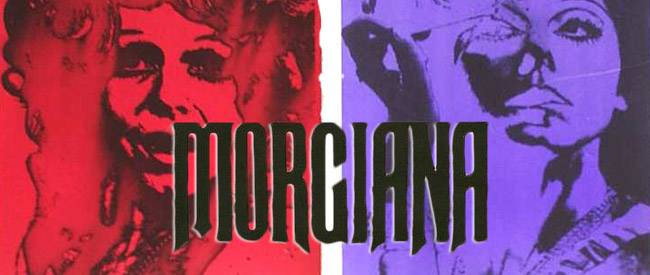
MORGIANA
Juraj Herz, 1972.
Czechoslovakia. 99 min.
In Czech with English subtitles.
FRIDAY, OCTOBER 4 – 10:00 PM
WEDNESDAY, OCTOBER 30 – 7:30 PM
Special introduction by film programmer Irena Kovarova on Wednesday, October 30! Kovarova’s full-career retrospective of Jan Nemec runs November 8 – 14 at BAM.
In this florid masterpiece of psychotic cinema, Iva Janzurová plays both sisters Klára and Viktorie, as the brooding Viktorie yearns to undermine her more favored sibling through slow poisoning. Beautifully rendered from Alexander Grin’s novel by Juraj Herz, MORGIANA is a kaleidoscopic rabbit hole of insidious gothic tropes and stunning Art Nouveau production design. Encompassing murder, romance, blackmail, duplicitous wills, and crossed identities, it’s a film best appreciated by casting literal interpretations aside and viewing it in the spirit of something like REPULSION as a surrealistic portrait of a fracturing mind told through roving, wide-angle camerawork, obtuse reflections, nightmare interludes, and a memorable score by Lubos Fiser. Though THE CREMATOR is considered Herz’s masterpiece, MORGIANA is arguably the more staggering achievement and a film often considered the swan song of the Czech New Wave.
Special thanks to David Budský of Ateliery Bonton Zlin and Irena Kovarova.

SATAN’S BLOOD
(aka ESCALOFRIO)
Dir. Carlos Puerto, 1978
Spain, 82 mins.
SATURDAY, OCTOBER 5 – 10:00 PM
TUESDAY, OCTOBER 22 – 7:30 PM
Andres and Ana are a couple living in Madrid. One fine day they decide to pack the car and wrangle their dog and set out for a fun time in the Spanish countryside. Not long into their trip, they encounter another car on the road. The couple in the other car, Bruno and Berta, flag them down. Bruno is excited to see his old college buddy – Andres, but Andres isn’t so sure they know each other. Never-the-less, the two couples set out for Bruno and Berta’s gigantic house for a grand reunion and a nice hot meal. But once they arrive, a storm rolls and in the as the weather gets worse and worse, Andres and Ana decide to stay the night. When the foursome decide to tamper with the spirit world in the form of a Ouija board, things really start to get weird. But that’s the least of their problems. Drug fueled orgies, suicide, creepy living dolls, and a freezer full of who knows what become a disorienting whirlpool and the helpless couple can’t get out. Trapped by a coven of devil worshipers, the film builds to a terrifying, twisting climax.
Produced by none other than Juan Piquer Simon (PIECES, SLUGS) SATAN’S BLOOD is a veritable cornucopia of sin and debauchery. A gothic tale of Satanic panic who’s influence can be seen as recently as Ti West’s throwback jam HOUSE OF THE DEVIL while showcasing the Spanish countryside and a score by Simon regular Librado Pastor.
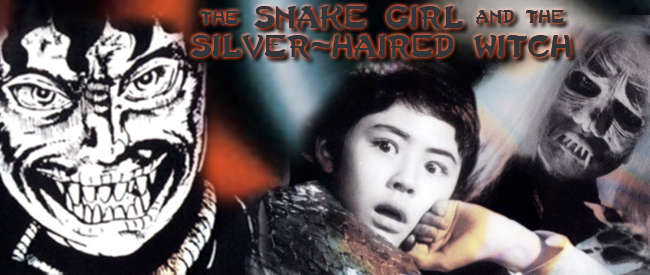 THE SNAKE GIRL AND THE SILVER-HAIRED WITCH
THE SNAKE GIRL AND THE SILVER-HAIRED WITCH
(aka Hebi musume to hakuhatsuma)
Dir: Noriaki Yuasa, 1968.
84 min. Japan.
In Japanese with English subtitles.
SUNDAY, OCTOBER 13TH – 10PM
WEDNESDAY, OCTOBER 30TH – 10PM
Based on the Japanese manga comic series by the legendary Kazuo Umezu (and directed with accomplished flair by Gamera/Ultraman helmer Noriaki Yuasa), THE SNAKE GIRL AND THE SILVER-HAIRED WITCH is a delirious, phantasmagorical fantasy-horror relic that screams for re-discovery.
Young girl Sayori leaves the attentive care of an orphanage to live with her distant relatives. Upon arrival, her new father promptly leaves for business and her mother remains strangely quiet. Meanwhile, Sayori begins having visions of someone peeping through her ceiling hole and dropping snakes on her. The dread increases as Sayori discovers another young girl in the house with a macabre, waxy face with cracks on the sides of her mouth. Sayori’s dreams intensify to the point of horrid, Freudian nightmares featuring enormous witches, snakes, spiders, and demons atop lavish heaps of psychedelic dissolves! But after she awakes, she soon realizes that the nightmares are becoming real…
Remarkably subversive and sinister for what was ostensibly a family picture about sibling rivalry, Snake Girl is a demented kids’s film not to be recommended to kids. While the puppetry FX may slide into (adorably) kitsch territory at times, there’s no denying the film’s imagination and occasionally brazen sadistic tone. With the mixture of a young girl’s narrative and FX-laced dream sequences, Snake Girl comes across as a precursorer or sorts to Nobuhiko Obayashi’s funhouse masterpiece Hausu, but made all the more sinister in that it was originally aimed at children!
Wildly inventive and effectively creepy, this is 60s Japanese studio horror of the highest, most surreal order.
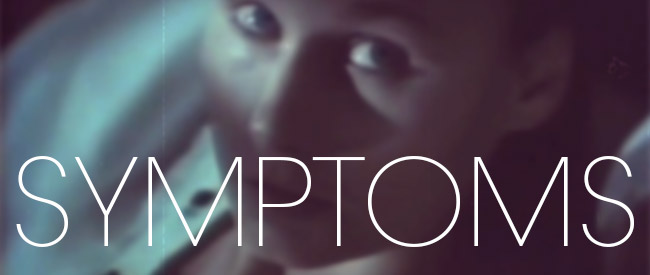
SYMPTOMS
José Ramón Larraz, 1974.
86 min. UK.
In English.
TUESDAY, OCTOBER 8 – 7:30 PM
FRIDAY, OCTOBER 25 – 10:00 PM
In this somber horror gem, Helen (Angela Pleasance, daughter of Donald) brings Anne (Lora Heilbron, star of Freddie Francis’ THE CREEPING FLESH, 1973) to her family’s creepy, rarely used forest estate where they can unwind from the stress of city life and focus on their writing. The woods may be lovely, dark, and deep, but the promises they keep lead to sex, murder, and insanity!
From Jose Ramon Larraz, the director of the vampire cult classic VAMPYRES (1974), comes SYMPTOMS (1974), part-Lewis Carroll forest fantasia, part-erotic thriller, part-Bergman-esque chamber of trauma, and 100% mental mindfuck. SYMPTOMS fits into a loose series of films by Larraz made in the early 1970s that includes the aforementioned VAMPYRES, as well as WHIRLPOOL (1970), DEVIATION (1971), and THE HOUSE THAT VANISHED (1974), all of which revolve around a small core cast of characters who venture into the woods and find themselves in a surreal, sexual, and psychotic nightmare.
Striking sustained notes of quiet unease that crescendo into madness, SYMPTOMS epitomizes the minimalist narrative, pastoral beauty, ethereal ermines, and genre revisionism that characterized Larraz’s work in this period. As Joseph A. Ziemba wrote online at Bleeding Skull!, “If you’re gonna go crazy, this is the way to do it.”
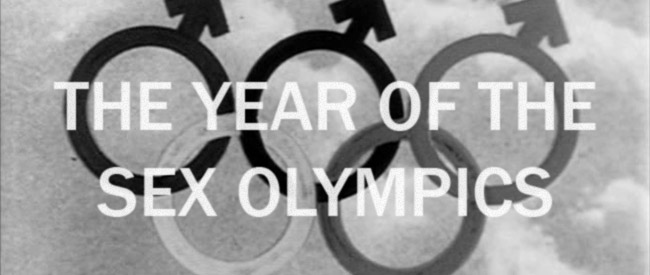
THE YEAR OF THE SEX OLYMPICS
Dir. Michael Elliott & Nigel Kneale, 1968
UK, 105 min.
WEDNESDAY, OCTOBER 2 – 10:00 PM
SUNDAY, OCTOBER 6 – 7:30 PM
A 1968 television movie, The Year of the Sex Olympics is the best science fiction film you’ve never heard of, a socio-political satire originally created as a criticism of the hippie/youth movement, but that became a prophecy of contemporary lowest common denominator reality-TV.
Author Nigel Kneale was a major figure in the UK sci-fi/horror genre genres, creating and writing all the well-regarded “Quatermass” films, and many others including Ray Harryhausen’s The First Men in the Moon and Hammer Pictures’ The Abominable Snowman, as well as scripting the non-genre films Look Back in Anger and The Entertainer.
Like Brave New World or Fahrenheit 451, The Year of the Sex Olympics examines a “soft totalitarianism” future, in this case where keeping the population calmed to the point of nullification is the goal, and TV and drugs are the method—not a boot to the face.
This future (“Sooner than you think,” the opening titles warn) is so far-gone that the controllers have created “the Sex Olympics,” where the world’s most beautiful people make love under the cameras—to distract the billions of viewers from doing any fornicating themselves and overpopulating the world further. “Sex is not to do, but to watch,” says one character. In the future this is “Apathy Control.”
When we glimpse the audience of “the Sex Olympics” through the control room’s monitors, they look like blobby ghosts, or fat ghouls.
But trouble’s brewing: the ratings indicate that the viewers are getting bored with the copulation marathons, and something will have to be done.
Since thinking has been discouraged (the chess machines play themselves, only to be watched), people in this world find it harder and harder to express themselves, even if they’re given the chance. It’s a high-tech world full of humans whose thought processes have been stunted—reflected in the almost incomprehensible torrent of slang-laden jargon and slogans spewed.
When the on-air suicide of a distressed designer sends ratings through the roof, the programmers realize they are on to something. “What are we supposed to do? Kill someone every night?!?” demands a conscientious TV exec who doesn’t realize he’s created a formula for success.
As two members of the ruling class begin to question the way things are, trouble and sorrow can only follow, especially after they allow themselves to be ensnared in the Apathy Control’s next project… “In the old days I think they called that ‘despair,’ right?” says a programmer, planning something evil. “It’s a show—something’s gotta happen!”
Don’t let The Year of the Sex Olympics’ sub-Doctor Who budget deter you: As Steven Puchalski has written in Shock Cinema, “What begins like a simple satire of modern sexual openness turns into a powerful dystopian vision of modern voyeurism and inhumanity, with a surprisingly emotional pay-off. Its sci-fi trappings are often crude, with characters talking into plastic wristbands, eating from toothpaste-like tubes, sporting outlandish hairdos, and resembling an Ed Wood production of THE JETSONS. What it lacks in production values, it makes up for in admirably straight-faced performances and bold conceits, in what has to be one of Kneale’s most unpredictably provocative works.”
The shocking thing about The Year of the Sex Olympics is how damn accurate it was in predicting not only the rise of ubiquitous pornography (what do you think Victoria’s Secret ads are anyway?), but the cruel and rotten “reality” shows like Fear Factor, Survivor or Big Brother, where suckers are debased routinely for the masses’ entertainment—and control: if everybody’s in front of their TV on Thursday night, it’s one less thing for the security patrols to worry about.
The film is also prescient in its depiction of a total surveillance state that is unquestioningly accepted—since the concepts of “family,” “home” and “love” have been eliminated, what’s “privacy”? And yes, “Art” has been eliminated, as well.
Starring Kubrick regular Leonard Rossiter and an unbelievably young Brian Cox, The Year of the Sex Olympics was long considered lost due to the incompetence of the BBC, but can be found if you look—like at places like the Spectacle.
